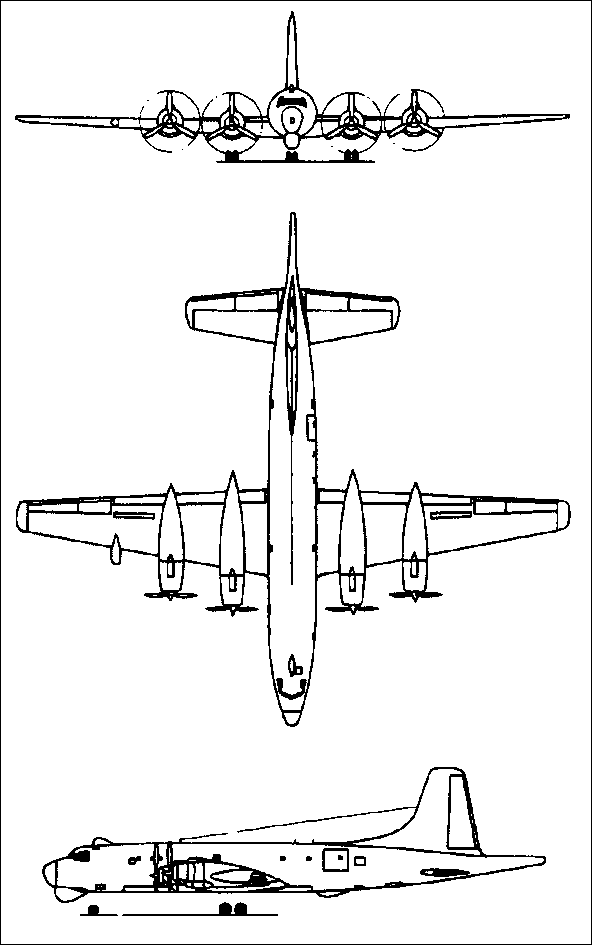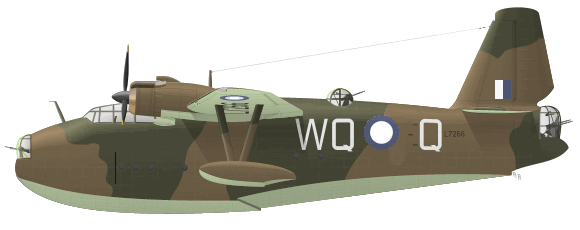
Maritime patrol aircraft based on the BCAC Britannia airliner, sharing the wings, tail, control surfaces and undercarriage with a modified fuselage. The components used are from the Type 167 long-range variant of the airliner. The Type 178 was developed to meet the requirements of the Royal Australian Air Force during 1945. 20 were ordered the same year off the drawing board.
There are two bomb bays in the central fuselage, each 18ft 6in long with a capacity of 4,000lb each and two underwing hardpoints which can carry 2,000lb each. A dorsal turret is also fitted. Fuel tankage totals 6,688 imp gals and an extra 500 gal tank can be carried in each bomb bay. Three cameras are carried for reconnaissance and an ASV Mk .V RDF set is carried under the nose for search and targeting. Three flare tubes are also fitted and the starboard wing carries a powerful searchlight. The crew comprises: pilot, co-pilot, navigator, radio-operator, flight engineering, observer/bomb-aimer, and two/three observer gunners. Full rest facilities are fitted in the rear cabin and extra crew members can be carried if required. Large doors in the rear port fuselage allow the loading of light freight if required.
Wingspan: 142ft 3in
Length: 124ft 3in
Height: 36ft 8in
Wing area: 2,075 sq ft
Empty weight: 80,000lb
Loaded weight: 155,000lb
Powerplant: four 2,625hp Bristol Centaurus X 18-cyl radial engines
Max speed: 315mph at 20,000ft, 288mph at sea level
Cruising speed: 230mph at sea level
Range: (cruising to and from patrol area at 223mph at 5,000ft, patrol at 190mph below 1,000ft with sufficient fuel for 575 mile diversion in all cases) 12hr patrol at range of 830 miles; 8 hours at range of 1,210 miles; 4 hours at range of 1,590 miles, normal cruise endurance 24 hours, maximum ferry range 6,100 miles
Initial rate of climb: 1,700ft/min
Service ceiling: 24,000ft
Armament: one Bristol B.17 dorsal turret armed with two 20mm Orkileon-FFB cannon, 8,000lb of bombs, torpedoes, mines or depth-charges in two bomb bays and 4,000lb carried on two underwing hardpoints




